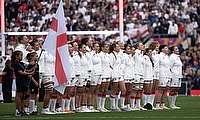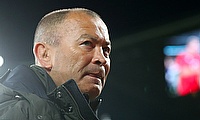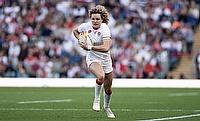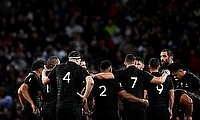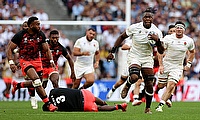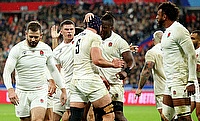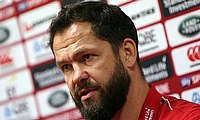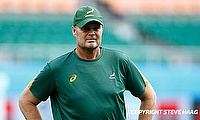England and their RWC balance
If you’re not already counting the hours until England and Fiji open the 2015 Rugby World Cup, you should be.
England take on Fiji at Twickenham on Friday evening as they look to make a fast start to a tournament where, as hosts, they are expected to make a real run on the title. To do that, they will need to hit the ground running against a Fiji side which is still fresh from celebrating victory in the Pacific Nations Cup this year.
The recent victory over Ireland at Twickenham not only reignited English confidence after two fairly lacklustre performances against France in their previous warm-up matches, it also highlighted a balance in the England XV (and 23) that had certainly been missing in those previous games.
The English set-piece had thrived in the Six Nations, losing just eight lineouts and two scrums and proving to be the most efficient in the competition, but has since been derailed by the loss of hooker Dylan Hartley. The Northampton Saint’s ban for headbutting Jamie George ruled him out of England’s opener against Fiji and as such, he was deemed unselectable by Stuart Lancaster. Unfortunately for England however, much of the team’s set-piece precision followed Hartley out the door.
The lineout had faltered significantly against France but with the set-piece nous of Geoff Parling and Tom Wood back in England’s pack for their match against Ireland, the home side enjoyed a 100% success rate on their 14 lineouts. Admittedly, statistics don’t tell you about the two or three wobbly throws early on that England were lucky to claw back on their side, but it was a vast improvement on the displays of the previous two games.
One area where Hartley’s absence continues to be felt is in the scrum. With Hartley between them, Joe Marler and Dan Cole had enjoyed dominance in the scrum during the Six Nations but have since struggled reach those same heights. The role of the hooker in the scrum is often undervalued and the travails of England’s first choice front row is now, rather painfully, showing their worth. As England were and still are expected to enjoy an advantage at the scrum over fellow Pool A contenders Wales and Australia, this issue will be concerning to England forwards coach Graham Rowntree.
Moving further back in the pack, the England back row was another area to reap the benefits of a better balanced make-up. As Parling did in the second row, Ben Morgan and Wood were two more players to almost certainly lock down their places in England’s starting XV, playing with an intensity and precision that Billy Vunipola and James Haskell didn’t exhibit in Paris.
Morgan may not have broken off any big runs, but his 2m per carry average, most of which was accrued around the fringes, constantly kept the Irish defence on the back foot and helped create both the space and defensive confusion that allowed England to reap the rewards out wide. It was a similarly low-key performance from Wood, but his impressive contributions in the lineout and at the breakdown, for now, more than likely keep Haskell out of the XV.
The half-back pairing of Ben Youngs and George Ford were excellent in the first half, bossing the game on the back of an effective pack, but when Ireland fought back in the second half, Ford began to lose his composure. It’s not a damning issue for Ford, as many fly-halves struggle on the back foot, but it will have done nothing to erase the questions over whether or not Owen Farrell should be starting at the RWC.
The new-look England centre partnership of Brad Barritt and Jonathan Joseph may not have opened up the Irish defence, but they did look stout defensively. Offensively, it was a case of the England centres distributing the ball to the wingers, who were in deadly form, rather than being the focal point of the attack. Defensively, however, the pairing looked in midseason form, linking and communicating well and exposing none of the open doors which England frequently showed during the Six Nations.
Last but certainly not least, England found their starting back three. Mike Brown and Watson were already inked in on the teamsheet, but the question of who would partner them, May or Jack Nowell, still remained. May once again shone at Twickenham and will almost certainly start opposite Watson come the Fiji game. The ease with which England dominated the aerial battle, with Brown and Watson in particular making some spectacular contested catches, will please Lancaster, especially against a very aerially-proficient team like Ireland.
An honourable mention should be made for the balance of the bench. Over the last couple of years, Lancaster has struggled to find the right chemistry on his bench and instead of being impactful, the arrival of replacements has tended to trigger more negative consequences than positive. The Vunipola brothers and Sam Burgess offer powerful carrying options who can exploit tiring defences, the work rate and tenacity of Joe Launchbury can be a significant boon to England’s own tiring defence and the half-back partnership of Richard Wigglesworth and Owen Farrell are much more adept at dominating territory and possession should England find themselves needing to see out a close-fought game.
Whilst the scrum will still be a very real concern for England, Lancaster hit the jackpot on his selection for the Ireland game. Parling, Wood and Morgan all impressed and gave the England pack the balance they needed going into a RWC, whilst the midfield mended its previous defensive maladies and the back three thrived.
England now seem to have the balance in their squad to pose a real threat at the tournament, but only time will tell if they also have the talent and game plan to go from contenders to champions.

